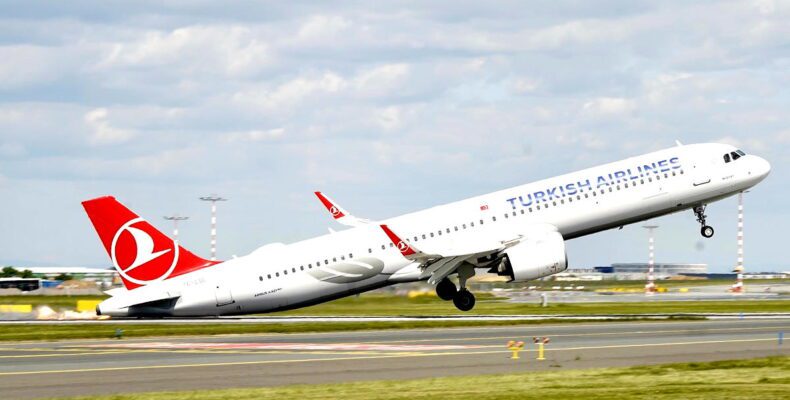Turkish Airlines A321neo Gets a Literal Tailspin
So, what’s the story here with Turkish Airlines flight TK1771 that ended up in a bit of a scrape? The Aviation Herald flagged this eyebrow-raising incident, which, at first glance, doesn’t seem to have been managed exceptionally well.
How Did a Turkish Airbus Jet End Up With a Tale to Tell?
On a seemingly ordinary Sunday, May 11, 2025, Turkish Airlines flight TK1771 embarked on its 926-mile journey from Istanbul to Prague. The flight was none other than a sleek, five-year-old Airbus A321neo, bearing the code TC-LSL.
All seemed fine until 2:19 PM local time at Prague’s Václav Havel Airport, where the plane had a brief encounter with runway 12. The pilots, however, decided to initiate a go-around—bam, tail strike. The aircraft re-ascended to 4,000 feet, realigned for another approach, and landed safely 15 minutes later, proceeding to taxi with no further drama. Canceling the return flight was inevitable, and the plane was grounded next to the runway for a couple of days.
Checking out the video footage, you might get a giggle from the aircraft’s ungainly posture during this mishap. Check that angle—wild stuff!
Video Clips and Vivid Moments
Ah, social media—the unsleeping chronicler of aviation bloopers. Twitter lit up with clips that showed the unfortunate tail strike of TK1771. Add a dash of radio spice: You could hear a grounded pilot casually informing air traffic control about the tail tap, just in case the crew of Turkish Airlines was oblivious. Now, how’s that for a bit of in-flight entertainment?
So, What Was the Deal With the Blip?
When a go-around happens after a plane has already kissed the tarmac, eyebrows are naturally raised. The conditions were calm; nothing much to report in terms of adverse weather. What made the pilots go for the go-around after a seemingly stable approach? Mystifying, isn’t it?
Now, I’m not pointing any fingers at the pilots here, but an Airbus sidestick is meant to be highly responsive, building questions around how that nose-up action managed to look so… indeliberate. Come on, guys, could someone explain this physics-defying maneuver?
Incidents and Idiosyncrasies
Let’s talk urban legends. Turkish Airlines has a quirky tradition of naming its aircraft after Turkish regions. Our protagonist here was tagged “Midyat,” a name that has seen better days. Its namesake, another plane, was retired after a landing boo-boo in 2019. Coincidence? Maybe, but it adds a fun twist to an airline prone to adventurous tales.
Past Aviation Antics
- Remember Flight TK467 in 2019? Another Turkish Airlines Boeing 737-800 had a nosegear collapse while attempting a return landing in Odessa. Tales of travel, right?
- The runway was fine, the skies were clear, yet here we are with another peculiar incident making its mark on airline legend.
Let’s Wrap This Turbulent Tale
In a nutshell, a Turkish Airlines A321neo encountered a tail strike during its adventurous go-around at Prague. These kinds of mishaps are not unheard of, but the manner in which the aircraft’s nose reached for the skies… that was something else entirely.
So, here’s the big question: What do you think of this daring Turkish Airlines incident? Got any theories? Meanwhile, for a less turbulent getaway, how about unwinding at Val Seny ski resort? Snow is more forgiving than tarmac, after all.
